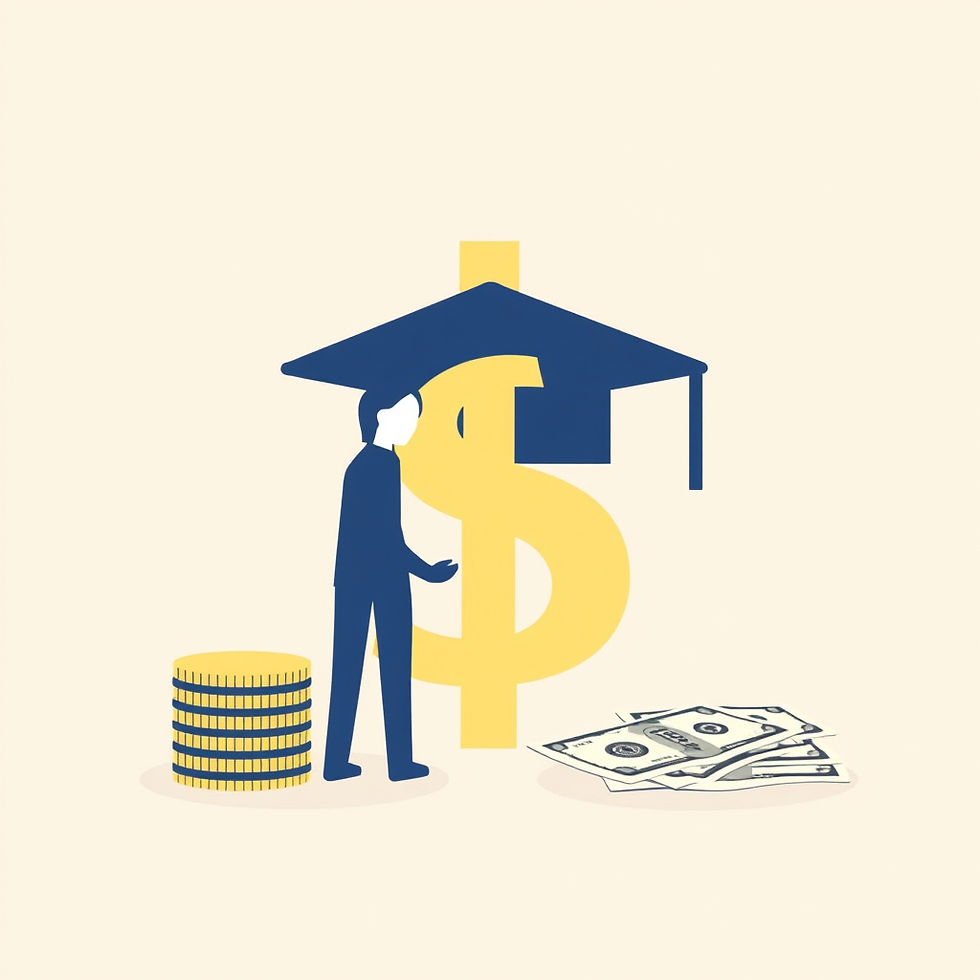Taxpayers Pay, But Who’s Helping Borrowers?
- Faith Njoku
- Oct 20
- 3 min read
Why the U.S. Department of Education and MOHELA need to remember who they work for
Every few weeks, I hear another story about someone losing hours or even days trying to reach their student loan servicer. I’ve experienced it myself: endless hold music, dropped calls, wrong information, and no follow-up. It’s not just inconvenient, it’s a failure of civic responsibility.
The U.S. Department of Education (ED) and its federal contractors like MOHELA are funded by taxpayers to serve the public. Yet the level of engagement, responsiveness, and procedural guidance borrowers receive often feels like an afterthought.

Billions in funding but little accountability
The Department of Education requested about $82 billion in discretionary funding for Fiscal Year 2025¹. That is an enormous public investment, money that should translate into better systems, staff, and service for the millions of Americans navigating federal loans. But despite these resources, borrowers are still met with long delays, unanswered emails, and inconsistent instructions.
Federal Student Aid’s own reports show that servicers handle millions of calls every quarter, but still record high abandonment rates and long wait times². These are not isolated problems; they are systemic symptoms of an overextended system that prioritizes bureaucracy over borrowers.
The backlog that never ends
As of 2025, servicers were sitting on roughly two million unresolved income-driven repayment (IDR) applications, along with thousands of Public Service Loan Forgiveness (PSLF) requests³. That means people who did everything right, including teachers, nurses, and public servants, are waiting months or even years for their accounts to be updated.
And when those updates finally happen, they are often riddled with errors. Borrowers receive wrong balances, miscounted payments, or “we’re still reviewing your case” responses that can stretch indefinitely.

MOHELA’s public failure
When student loan payments restarted after the pandemic pause, MOHELA made headlines for all the wrong reasons. The company sent out erroneous bills, incorrect payment notices, and in some cases, withdrew the wrong amounts from borrowers’ accounts⁴.
The U.S. Department of Education even withheld $7.2 million in payments from MOHELA as a penalty for its poor performance⁴. Think about that: taxpayers are footing the bill for a company that failed the very people it is paid to help.
Civic disengagement by design
When borrowers can’t reach anyone, when emails go unanswered, and when errors linger for months, what message does that send? It tells citizens that government isn’t listening. That civic participation, in this case simply trying to follow the rules and pay your loans, doesn’t matter.
This lack of civic engagement erodes public trust. Bureaucracy becomes a wall, not a bridge. And yet, the money keeps flowing, salaries are paid, contracts are renewed, and metrics are buried in reports few people read.

A better path forward: people over process
This isn’t just about calling out failures; it’s about demanding smarter use of public dollars. We don’t need another flashy portal or redesigned dashboard, we need people.
Here’s my proposal:
Fund one dedicated Department of Education representative for every university and college in the country. This person would be a direct point of contact for students and alumni navigating repayment, forgiveness, or consolidation.
Tie contractor payments to real outcomes. Not just call volume, but actual resolution times and verified borrower satisfaction.
Expand the independent borrower ombuds office. It should have real enforcement power when servicers repeatedly fail.
These are not radical ideas. They are practical fixes to restore civic engagement and accountability.
The call to action
If you’re tired of watching taxpayer dollars vanish into red tape, contact your congressional representatives. Demand oversight hearings. Ask why servicers like MOHELA still receive federal contracts despite repeated failures.
Most importantly, urge the Department of Education to pilot a “one representative per university” program within the next year. It is time to stop hiding behind bureaucracy and start investing in human infrastructure: people who can pick up the phone, answer questions, and actually help.
Taxpayers already pay for this system. The least we deserve is one that works.
References
U.S. Department of Education. (2025). Fiscal Year 2025 Budget Summary. https://www2.ed.gov/about/overview/budget/budget25/summary/25summary.pdf
Federal Student Aid. (2024). Loan Servicer Performance Reports, Q3 & Q4. https://studentaid.gov/data-center/business-info/contracts/servicer-performance
Investopedia. (2025, April). Student Loan Servicers Struggle With IDR and PSLF Backlogs. https://www.investopedia.com/
The Guardian. (2025, January). MOHELA sanctioned $7.2 million over billing errors after loan repayment restart. https://www.theguardian.com/
Protect Borrowers. (2024). Federal Student Aid Ombudsman Annual Report on Servicer Mismanagement. https://protectborrowers.org/































Comments